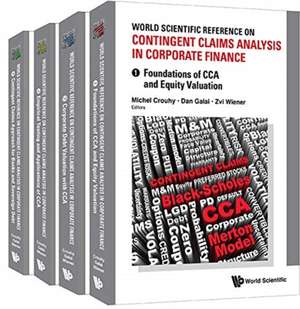Contingency Approaches to Corporate Finance: World Scientific Handbook in Financial Economics, cartea
en Limba Engleză Hardback – 27 feb 2019
Preț: 7378.57 lei
Preț vechi: 9582.56 lei
-23% Nou
Puncte Express: 11068
Preț estimativ în valută:
1412.02€ • 1465.25$ • 1180.23£
1412.02€ • 1465.25$ • 1180.23£
Indisponibil temporar
Doresc să fiu notificat când acest titlu va fi disponibil:
Se trimite...
Preluare comenzi: 021 569.72.76
Specificații
ISBN-13: 9789814730723
ISBN-10: 9814730726
Pagini: 1200
Dimensiuni: 184 x 263 x 124 mm
Greutate: 4.11 kg
Editura: World Scientific Publishing Company
Seria World Scientific Handbook in Financial Economics
ISBN-10: 9814730726
Pagini: 1200
Dimensiuni: 184 x 263 x 124 mm
Greutate: 4.11 kg
Editura: World Scientific Publishing Company
Seria World Scientific Handbook in Financial Economics
